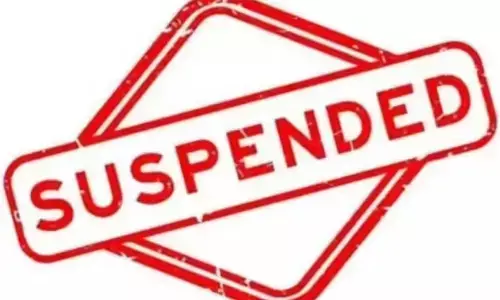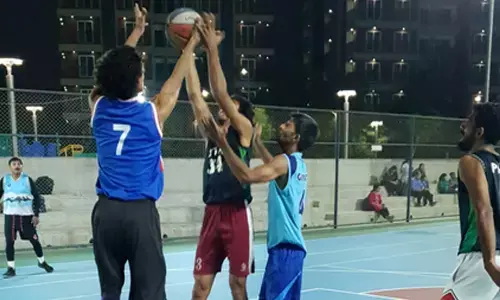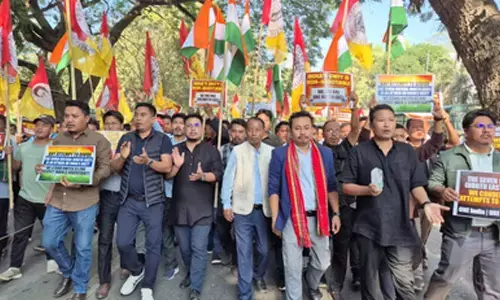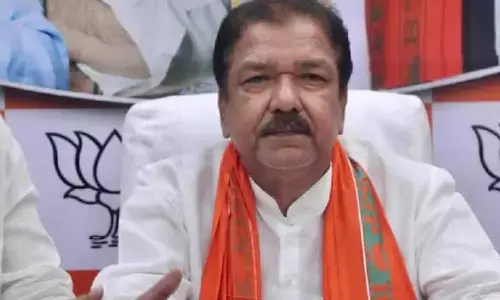Aromatic battle between tea, kapi

Travelling from north to south by train, Nagpur that is virtually the country’s central point becomes the dividing line. The “tea territory” is left behind and the “coffee territory” commences. That is the broad pattern of how the two brews are consumed.
Travelling from north to south by train, Nagpur that is virtually the country’s central point becomes the dividing line. The “tea territory” is left behind and the “coffee territory” commences. That is the broad pattern of how the two brews are consumed.
Tea is Assam’s “state drink,” which is only to be expected. The previous UPA government had plans to make tea the “national drink,” if the then Deputy Chairman of the Planning Commission, Dr Montek Singh Ahluwalia’s word was anything to go by.
Now, Narendra Modi, an erstwhile tea-seller, is the country’s Prime Minister and engages in “chai pe charcha.” Actually, it is seldom realised that India, the land of ‘chai,’ is facing a stiff battle from only one other drink, ‘kapi,’ which is also synonymous with India
The production, however, is not so sharply divided. Coffee is grown mainly in the South – Karnataka (53 per cent), Kerala (28 per cent) and Tamil Nadu (11 per cent). New areas are coming up in Andhra Pradesh and Odisha and all the “seven sisters” in the North-East.
That makes India the world’s second largest coffee producer and also its exporter. Despite domestic consumption of ‘kapi,’ 80 per cent of coffee is sent out, mainly to Europe. It competes well with Brazil, South Africa and others; and the Indian Arabica and Robusta are among the world’s finest coffees. India produced 3,27,000 tonnes of these varieties last year.
Indian coffee has a good reputation in Europe for it’s less acidic and sweetness of character and thus widely used in Espresso Coffee, though Americans prefer African and South American coffee, which is a more acidic and brighter variety.
However, it is Italy which imports huge quantities of Indian coffee, much of the coffee export-import also takes place in the form of the new coffee culture spawned among the Indian young by Barista, Café Coffee Day and others.
It is indeed ironical that reputed restaurants and luxury hotels in New Delhi do not offer Indian filter coffee. They offer only Cappuccino, priced double and more than the Indian coffee would.
Tea, mainly grown in Assam, Darjeeling and Sikkim and in Kerala, is also the world’s second highest in terms of both production and export. Our old scriptures say that tea was consumed widely during the Ramayana era and popular because of its herbal values and in Ayurveda.
But it vanished for centuries. It must be admitted that tea ‘returned’ to India thanks to the British colonial masters. The crop was commercially cultivated in the 1820s by the then British East India Company.
The Tea Board and later, The Coffee Board, promoted the two brews. It is spreading out. In a manner of the saying “carrying coal to New Castle,” Indian group Tata owns Tetley, the famed British brand.
Tea is Assam’s “state drink,” which is only to be expected. The previous UPA government had plans to make tea the “national drink,” if the then Deputy Chairman of the Planning Commission, Dr Montek Singh Ahluwalia’s word was anything to go by. Now, Narendra Modi, an erstwhile tea-seller, is the country’s Prime Minister and engages in “chai pe charcha.”
Actually, it is seldom realised that India, the land of ‘chai,’ is facing a stiff battle from only one other drink, ‘kapi,’ which is also synonymous with India. Both the brews have a strong standing and are voluminously consumed by the second-largest populace in the world.
Just like people elsewhere, Indians cannot start the day without their fix of Chai and ‘kapi’. The day is not considered complete if either of the beverages is not consumed. People in the South combine their morning coffee with the daily newspaper reading, or visit to the temple.
Tea has replaced many a traditional home where guests were offered milk or lassi. “Chai toh pi kar jaiye,” is the common entreaty to a guest who is either in a hurry or is fighting shy.
The choice of the brew is likely to be among the first words you hear from your friendly waiter as you sit down to have your breakfast, whether at a posh hotels, the restaurant down the street, or the street kiosk. “Tea, or coffee, sir/madam?” is the question asked at the table as the top-down cup is readied for either brew to be poured.
Both the beverages have a long colourful history, as well as evolved with the local taste, which includes the addition of spices to suit the palate of locals. Chai is the staple drink, whether you buy it from the roadside vendor or drink it in the confines of a five star hotel.
If the vendor will add some ‘adrak’ and Tulsi, the tray at the posh place will have a pot covered with tea-cozy and with the accompanying honey, lemon and other condiments.
“Chai mein chaah hai,” was the heart-warming dialogue from renowned film-maker K A Abbas’ film “Shehar Aur Sapna.” He was actually doing an encore after getting Raj Kapoor to woo Nargis over a cup of tea (all for two annas) that the hero did not have and borrows it smartly from the heroine.
If your cuppa is sweetened tea, then you can have it at a restaurant or at the corner street tea stall. Ask any old-timer in Mumbai and Pune which used to have restaurants run by Irani entrepreneurs. The “Irani chai,” a non-spiced benign drink with milk and sugar, is in a class of its own.
Or ask any trader at the textile market where the little cuppa comes, on a signal, to seal the deal. The signal is clear — no deal, no tea.
Tea was supposed to have revolutionary flavour in the last century. The talk in political circles was whether India would witness a revolution. The joke was – take away tea and Charminar cigarette (incidentally a Hyderabad product) from the comrades, and there will be no revolution!
The revolution has eluded Indians, while the cigarette, albeit with scary warnings to the smokers, and tea have survived.In the new century, tea is everybody’s drink, while coffee, with a stronger dose of caffeine, and a substitute to alcohol, is supposed to be an intellectual’s drink.
There is lore and tradition surrounding how one has tea and coffee. The filter coffee is had in the traditional ‘dabara,’ a combination of two small and large stainless steel cups, the smaller one filled to the brim. Critics have wondered why use two hot vessels and scald your fingers and your lips. Why can’t coffee drinking be done without this?
But only tea is served in an authentic ambiance, in a kullar or a claypot cup, which can then be thrown and smashed to the ground – sustainability and recycling at its best.
If not coffee, India is certainly recognised as the world’s largest tea-drinking nation. New players in the market in recent years which have made a presence India include the likes of Javagreen, Coffee N U, Coffee Bean & Tea Leaf, Gloria Jeans, and The Chocolate Room, as well as Starbucks and Dunkin Donuts. It is also a clear sign that modern day cafés are making inroads into the business previously dominated by traditional coffee and tea shops.
According to the “India Coffee Shops & Café Market Forecast & Opportunities, 2017,” coffee shops and the café market in India is expected to witness phenomenal growth in the next five years. But all that will come at a higher cost.
As per this forecast, the average bill at a coffee shop in India, which was around Rs 135 to 150 in 2010, is expected to increase to Rs 230 to 255 next year.
It is forecast that the coffee shops/café market in India will cross 5.6 billion rupees next year. Its consumption had also seen an increase from 60,000 metric tonnes in 2000 to 115,000 metric tonnes in 2011.
The battle between tea and coffee is likely to take an aromatic turn in the coming years, benefiting not only the lovers of both the brews, but also the industry.

















